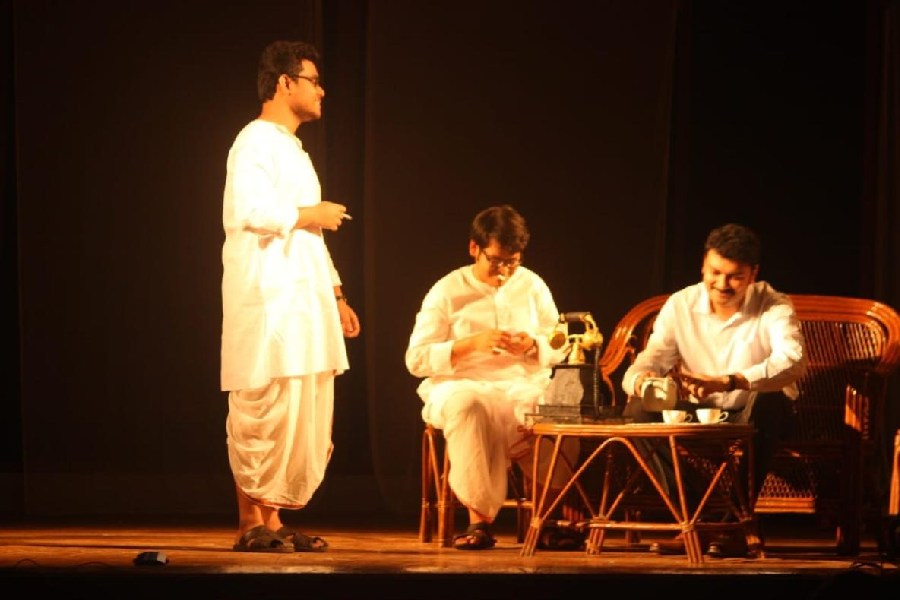A whodunit, when performed on stage, often leaves no room for innovation. The characters are introduced, the murder takes place, and then the detective disrupts social order in his search for the truth. And so it is with Bonhi Potongo, adapted from one of Sharadindu Bandopadhyay’s Byomkesh stories.
The audience’s attention, then, must be captured with flawless acting and nuanced direction. Unfortunately, precious little of that is evident in Playhouse Kolkata Theatre Club’s performance. The lead actors, Saibal Das as Byomkesh and Satyajit Roy as Ajit, are bland — staring off pensively into the distance in a haze of cigarette smoke does not make one a satyanweshi — while Ankan Dhar as Dr Palit, the physician taking care of the wealthy Deep Narayan Singh (Monimoy Banerjee), is needlessly histrionic. Anirban Paul as Narmada Shankar — seemingly the prime suspect — gets on one’s nerves with his jarring melodrama. The women performers are marginally better. Rumela Das as Chandni is able to admirably balance her roles as the wife of the incompetent drunkard, Deb Narayan Singh (Avishek Dutta), and a loyal friend to Shakuntala, Deep Narayan’s attractive young wife. Semanti Mitra’s delicate portrayal of Shakuntala, torn between her marriage and her love for Ratikanta Chowdhury (Abhinaba Banerjee), is also praiseworthy. Disha Mitra’s graceful cameo as Satyabati somewhat lifts the pall of masculine contemplation hanging around Byomkesh.
The saving grace for Bonhi Potongo, though, is its music. The music director, Subhadrakalyan, weaves the notes through the scenes to reflect the agonies and the ecstasies of the characters, and the lilting cadence of “Byathay anuragey” conveys the passion in the meeting between Byomkesh and Satyabati. The set design deserves mention as well; a giant telephone in the middle of the stage to indicate Byomkesh receiving a call, ornate deck chairs and large wooden doorframes to convey opulence — all show signs of a production where more attention is paid to
appearance than to execution.
Perhaps Byomkesh stories are better left to bigger screens.










